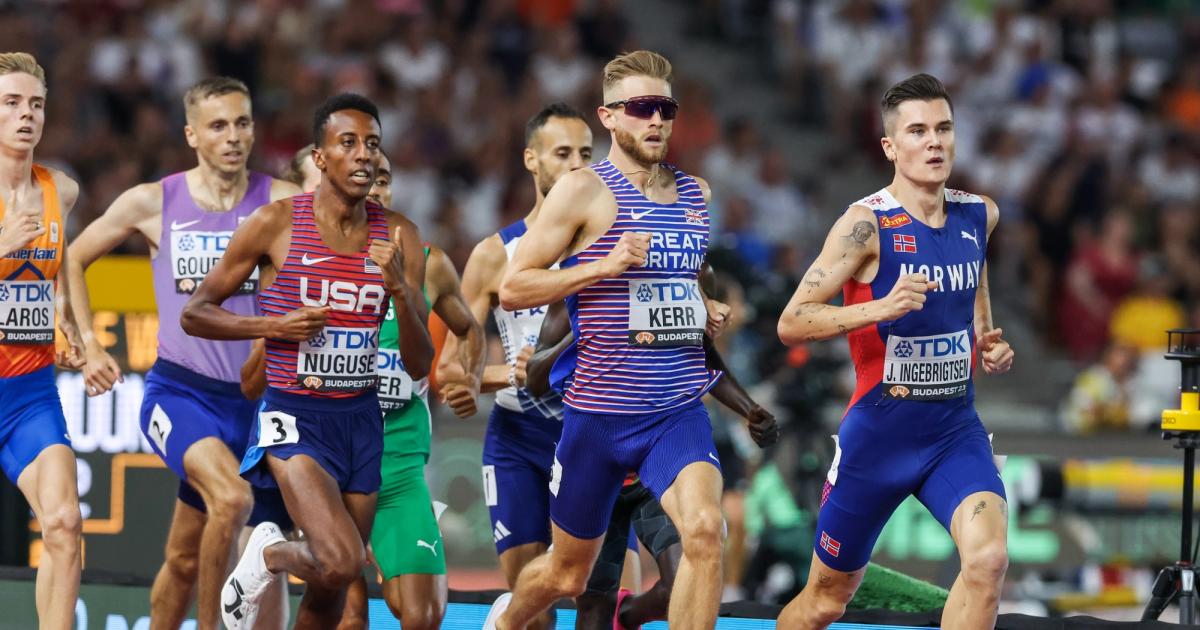By Paul Hof-Mahoney
July 25, 2024
If you’ve been keeping up with CITIUS MAG for the last few months, you know just how convoluted the qualification process for Olympic track and field can be. But now, with the dust finally settled a week out from action kicking off in Stade De France, we’re going to try and give track and field fans a (relatively!) concise look at how their favorite athletes made it to Paris.
Here’s what you need to know:
- The size of the field of accepted athletes varies from event-to-event. For individual events, field size ranges from 24 in the heptathlon and decathlon all the way up to 95 in the women’s marathon. There are 16 entries in each of the track relay events, and 25 in the race walk mixed relay (which uniquely allows for countries to enter two teams, if possible).
- The qualification window also has some variance depending on discipline. For all in-stadium events, aside from the 10,000m and the combined events, the window ran for one year: from July 1st, 2023 to June 30th, 2024. The window for those two aforementioned “other in-stadium events” ran from December 31st, 2022 to June 30, 2024. That’s because the combined events and 10,000m are contested far less frequently. This same combined/10,000m window was used in the race walking events, whereas the marathon window ran even longer: from November 6th, 2022 to May 5th, 2024.
- In individual events, countries are permitted three entries if they have enough athletes that qualified – more on what “qualified” means in the coming bullet points. National Olympic Committees have free reign in selecting from their pools of qualified athletes and go about it in several different ways. In the U.S., the system is solely based on Trials. If you finish top three at the Trials and you are qualified, you’re ready to book your ticket to Paris. There can be some shenanigans when athletes who finish top three aren’t qualified or opt not to contest that event in Paris, but it’s typically a very cut-and-dry system. Other nations will typically use a mixed system when applicable, where there are one or two spots determined by a Trials meet, but the other spots can be awarded through a discretionary selection process.
- The most straightforward way to qualify is by achieving the Olympic Standard. These marks were laid out by World Athletics in late 2022, with the hope that around half of each event’s field would qualify via the standard. That didn’t always go exactly according to plan. In the women’s marathon, 88 women qualified by achieving the standard of 2:26.50, eight more than the original intended field size (and that doesn’t include the 95 Ethiopian women that ran the standard but were held out by the three-athletes-per-nation rule). On the other end of the scale, only eight of the 32 qualifiers in women’s javelin surpassed the 64.00m standard.
- The rest of the Olympic field is made up of athletes who qualified through the World Rankings Quota (take a shot every time we’ve said that phrase in the last three months… just kidding! Please don’t!). This a system that assigns a score to an athlete’s performance, adds a “placement score” weighted by the level of meet and their finish in the competition, and then averages a select number of the athlete’s best performances from the qualifying window to produce their World Rankings score. If an athlete that doesn’t have the standard falls within the quota necessary to fill out the designated field size, then they’ve given themselves a spot in Paris (if selected by their NOC).
- Qualification for the track relays was much simpler. 14 teams qualified through World Relays in May, and the final two spots were determined by the fastest time among non-qualifiers between December 31st, 2022 and June 30th, 2024.
- The final means of qualification is through the allocation of universality places. These entries are intended to give smaller nations the chance to still compete in Olympic track and field. Nations that had zero athletes qualify individually on either the men’s or women’s side are permitted to enter one athlete in any of the 100m, 800m, or marathon. 100 athletes will be competing in Paris in one of these universality places, with the vast majority coming in the 100m.
Follow CITIUS MAG across Instagram, Twitter/X, YouTube, and the CITIUS MAG Podcast to stay looped in on the Olympics. We’ll be dropping meet previews, podcasts, and tons of content to get you excited about Paris!

Paul Hof-Mahoney
Paul is currently a student at the University of Florida (Go Gators) and is incredibly excited to be making his way into the track and field scene. He loves getting the opportunity to showcase the fascinating storylines that build up year-over-year across all events (but especially the throws).




